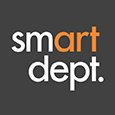The beginning of a new fiscal year always brings new project budgets, additions to headcount and unexpected turnover — all resulting in the need to identify good full-time and temporary talent. As a 20-year veteran of the staffing industry, I’ve been approached many times by companies to discuss what attracts good candidates. There are many factors that can influence a prospective candidate’s decision, including salary, benefits, location of company/potential commute, off-site work options, and work-life balance. Companies have gone to great lengths to put together great packages and attract good talent, only to lose them due to a very simple reason — the hiring process takes too long.
There’s an old expression in business: “Time kills all deals.” And this holds very true for hiring top candidates. Think about it — top candidates are consistently being recruited (even when they may not be exploring a new job). Often they are juggling opportunities with multiple companies. A lengthy interview process and the inability to make quick hiring decisions can impact the odds of landing a top candidate.
It seems the hiring process has become more drawn out since the Recession of 2008. For several years afterward, companies redefined roles to keep headcount down, and many employees took on additional responsibilities. Employers wanted candidates who fit every criterion of a job description — from industry experience to very specific software skills — and, of course, they also had to be a cultural fit with the organization. This added steps to the interviewing process, from executives scheduling interviews with non-direct reports to panel interviews with various team members. Today it’s not uncommon for the average role to take three or four steps between phone screens, in-person interviews and skill assessments. The average life cycle of an open position is now typically about three months or longer.
And it’s not just full-time roles that have developed a long hiring cycle — it takes much more time to on-board temporary help than it did five years ago. Many assignments of three months or longer in duration require an interview process very similar to that of a direct placement. At the very least, there are two interviews: a phone screen and an in-person. Add on skill assessments, waiting for hiring managers’ feedback and pre-employment screenings, and it can easily take up to four weeks just to start a temporary employee. Working in the creative, interactive and marketing niches, we staff a variety of roles in which talent is in great demand — especially anyone with digital experience. Often these candidates are sought out weeks before finishing a contract and have little or no downtime before starting somewhere new. They won’t be available long enough to endure a month-long interview cycle.
My advice for companies that are looking to obtain top talent more consistently is pretty simple: Go back to the basics and examine your hiring process. How long does it take you to vet resumes? How many people need to be involved in a new hire? How efficient is your company at getting quick feedback after interviews? How quickly can you make a hiring decision?
While taking time to appropriately vet potential hires is very important, be aware of the parts of the interview process that stall. Try to structure interviews so candidates don’t need to come on-site more than twice during the hiring process. Block interview days and times so multiple candidates can go through the process at the same time and comparisons/feedback can be drawn more quickly.
And if you identify the perfect candidate early in the hiring process, don’t stall things by comparing that person to others who are not as far along in the process. Candidates are very aware of companies that move too slowly. Good talent tends to have strong networks, so word gets around. And good candidates appreciate companies that move the process along quickly and show consistent interest in them. Again, “time kills all deals” — so once you identify a good candidate, don’t let them get away!
From the desk of Matt Crook, smartdept. inc. President










